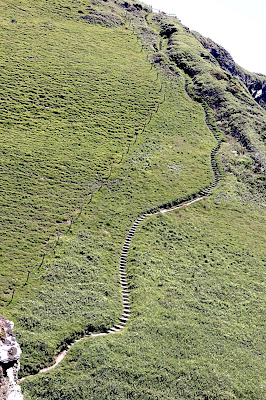 |
| Peter Riddell, Observer, 28th July 2019 |
Yes, I am still on holiday, and, yes, I hadn’t planned to write anything political whilst away. But I couldn’t let the victory of Boris Johnson pass unremarked.
And so it has come to pass. The Borismageddon is upon us. The UK is now officially the laughing stock of Europe, led by a man who vies only with Donald Trump for the lack of esteem in which he’s held in foreign capitals. The Brexiteers predicted that we’d be punching above our weight and they’ve delivered a nuclear whoopee cushion and we are all the butt of the joke. EU leaders know who Boris Johnson is, and their opinions are not flattering. They’re not going to be disposed to do any favours for the man who brought the European project down with lies about bent bananas and, more recently, lying about kippers.
In his first rambling free form speech as Prime Minister, we saw Boris Johnson lecture the nation like a gerbil on crack. He sounded as though he was making it all up as he went along, and I suspect he probably was. Amongst the faux bumbling, the spewing out of promises that he had neither the intention nor wherewithal of keeping, our new PM was true to form. He lied. He lied with no sense of shame. He lied with no self-awareness. He claimed that it was merely a “remote possibility” that the EU would not reopen negotiations on the terms of the UK’s exit. Yet he knows that it’s a “remote possibility” in the same sense that it’s a remote possibility that the sun will come up in the east tomorrow morning. It’s a remote possibility in the same sense that Facebook will collect all your personal data and claim that it’s doing you a favour.
The Brextremists can long longer blame a government of closet remainers for the failure of Brexit, so the new PM is just getting his excuses in early. When the vanity of Brexit comes crashing into reality it will be the fault of the EU. It will be the fault of MPs. It will be the fault of Jezza and his comrades. What it won’t ever be is the fault of the British Empire nostalgics and fantasists who created the myth of Brexit in the first place.
It’s one thing to anticipate a Boris Johnson government, but you only really grasp the true horror once it has actually happened. We now have the most right wing government in living memory, packed full of Ayn Rand fans, Brextremists, death penalty enthusiasts, failed ministers and those whose only criticism of Margaret Thatcher is that she didn’t punish the working classes harshly enough. And as if that wasn’t bad enough it is led by an empty egoist who cynically acts the clown, taking the country down a path of lies, in pursuit of a fantasy that doesn’t exist.
We didn’t witness a cabinet reshuffle. It was the wholesale appointment of a new government by a man who has no democratic legitimacy beyond the approbation of the selectorate of the Conservative party. Boris Johnson ruthlessly axed all those who didn’t give him their full support. It's a purge that a Stalinist would be proud of. This is a man who believes that individuality is something that only applies to him. The role of everyone else in the universe is to bask in his self-esteem. The new Prime Minister has signalled that he’s going to pursue the most extreme form of Brexit possible and that the concerns of remainers are of no consequence.
The Tories are now telling us that Boris Johnson will either do or die. Apparently, Malcolm Rifkind (remember him?) appeared on Sky News last night to tell us that this new government could make a success of Brexit and then Boris Johnson will be a national hero. There’s never been a greater display of wishful thinking since Theresa May bought a pair of red shoes and clicked her heels together three times in the hope that it would deliver her to the end of the yellow brick Brexit road. Even if Boris Johnson does deliver Brexit, he’ll be delivering something that many, many people have repeatedly, insistently, consistently, stated that they do not want. You don’t become a hero by forcing an unwanted dish down an unwilling throat in the hope that it will suddenly become tasty. You become a hated abuser.
It's predicted that Boris Johnson will be the worst PM that the UK has ever had. His reign will end with bombast, in self-delusion and with the UK in tatters. He likes to think he's a modern day Churchill. He's not, comparison with Neville Chamberlin would be more accurate.







































